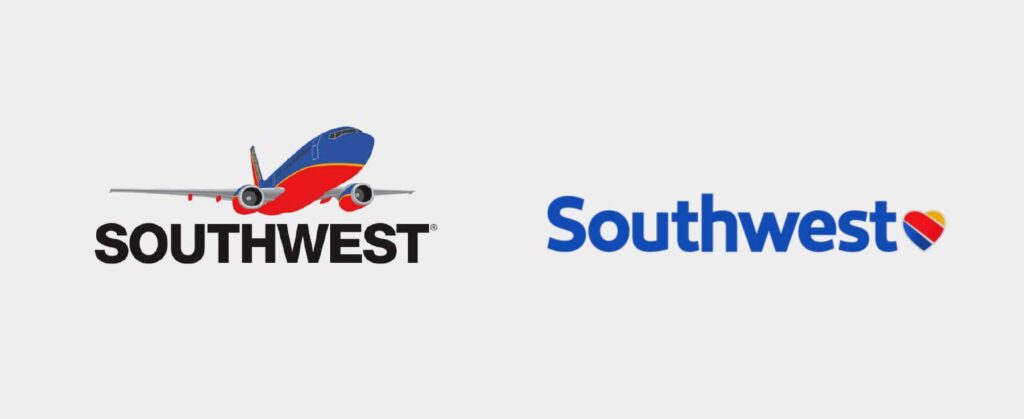Subscribe to Our Newsletter
Businesses rely on brand to set them apart, connect with people, and inspire loyalty in everyone from employees to investors. But in fast-shifting markets (often full of disruptive new entrants), it’s easy for parts of a brand story to lose their relevance, or for visuals to no longer reflect a company’s evolving value to customers.
Sometimes a full rebrand is the right choice—but don’t underestimate the brand refresh. When strategy is born of fresh understanding, updates can powerfully advance a brand.
What is a Brand Refresh?
Brand refreshes are focused branding initiatives that keep a business’s identity, promise and differentiation current. They are more focused than rebrands, as they don’t involve complete overhauls across brand positioning, strategy, design and experience. Instead, they update aspects of the brand that are falling behind as the company speeds forward. And in the best examples, these moments of semi-reinvention refresh the human reasons for choosing the brand.
Sometimes brand refreshes just look like a fresh coat of paint.
In 2016, Instagram traded up its brown retro camera logo for a sleek, contemporary icon atop a vibrant gradient. The brand also lightened its app UI, offering a simplified visual journey.
Instagram’s legacy icon, last updated in 2011 (left) found vivid simplicity after its 2016 refresh (right).
Southwest, while keeping its signature color story (bright hues representing the airline’s warmth, innovation, precision and bright future), modernized its brand by losing the plane illustration from its logo, choosing a more playful font, and accenting its name with a heart.
As reflected in its 1998 logo (left), Southwest had always relied on aviation imagery to build brand awareness and recognition. The airline’s refreshed 2014 logo (right) celebrated the name they’d built.
But these brand refreshes were more than skin deep.
Instagram recognized its user journey was full of visual clutter—when people just wanted to enjoy the pristine, filter-perfected images and videos in their timelines. Born of empathy, the brand’s new, cleaner logo and muted (even humble) UI made way for what mattered.
Southwest recognized its growing reputation as a different kind of carrier. Its joke-cracking flight attendants and friendly policies, like no fees for checked bags, were bringing joy back to flying. And customers were rewarding the experience with loyalty. So, Southwest made their name easier to spot (think Expedia context) while doubling down on travel love as their differentiator. Just last year, an aligned “Go with Heart” campaign drove the message home.
A refresh is an opportunity to check, renew and strengthen connections with the people the brand cares about. To respond to new stakeholder needs or feedback, visibly and tangibly, out of understanding for their journey and their hopes. Yes, as part of the process, the visuals often change. But they’re only the tip of the strategic iceberg.
When is a Brand Refresh Helpful?
Brand refreshes are both useful and cost-effective when a company is evolving vs. reinventing itself. Businesses are more likely to need full rebrands when making fundamental changes to their positioning and values, or if they have plans to enter and/or define new categories.
A brand refresh may be the answer when:
- Merging with or acquiring other businesses to offer add-on services
- Bringing on new leadership that’s planning limited strategic redirection
- Introducing products that don’t quite fit within the existing brand story
- Facing competitive landscapes that have shifted since the brand launched
This list isn’t exhaustive. But it’s full of instances when a brand needs to keep pace with (or catch up to) the business. Moments of growth and scale can get chaotic. Branding sometimes sits on a back burner—until it becomes urgent to realign the brand with the business strategy.
At times like these, relationships with all brand audiences (employees, consumers, investors, partners) are at risk. The company’s messages and design language may no longer match the moment. Existing customers may feel confused or alienated, even left behind, by brand experiences that have become inconsistent or unfamiliar. Newcomers may see a mix of old and new promises and not understand the brand story, much less see themselves in it.
A refresh can help the brand refine its promise, confirm its relevance, reframe its value, and make the change exciting—even delightful—for new and existing audiences. After all, businesses usually make changes to serve someone better. A refresh gives them the chance to announce it, inviting people to share the new brand journey that their needs inspired.
The 4 Steps to a High-impact Brand Refresh
1. Let insights lead
Before hiring a firm to “update” or “modernize” your brand’s look and feel, invest in understanding how audiences perceive your place in their lives today. Talk to customers, partners, investors and employees, with empathy, about their experience. Research people’s deeper needs and motivators. This curiosity reveals the brand problems for your refresh to solve.
2. Audit your current brand
In the context of all you’ve learned, assess your current brand’s strengths and weaknesses: when and how it resonates with audiences vs. when it fails to address current needs. Take a fresh look at your competition, whose of-the-moment marketing may be crowding out your brand voice—or threatening to connect better with the people who matter most to you. You’ll identify both your brand’s most enduring pillars and the outdated facets to revitalize.
3. Develop a focused strategy
It’s time to dive into planning. Brainstorm how to refresh your brand’s human connections by telling your updated story through the most relevant elements. Visual identity (logo, typography, color palettes) is usually in play, but customer interactions (online, in-store, on mobile) and employee experiences can be, too. A new tagline can draw a growing list of products or services into relatable context for prospects and customers. A new visual language can invite a next generation of employees to see your company as a place to live shared values.
4. Implement and announce your brand refresh
Finally, design and build your new, strategically focused assets. And then roll your refreshed brand out across touchpoints and stakeholders—with vocal pride. Seize the PR moment to reintroduce what has always set you apart as well as how you’ve evolved to become a better partner in people’s lives. Celebrate all the reasons to give your brand a fresh look.
Want to explore the opportunity to create new value by refreshing your brand? Let’s talk.





